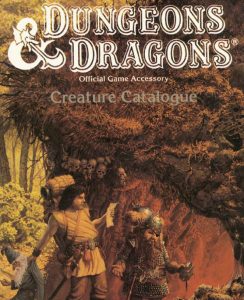
The Enigma of Trolls: Masters of Adaptation
Across the annals of myths and legends, trolls have always stood out-paragons of nature's mysteries, invoking both awe and dread. These behemoths, marked by unmatched adaptability, epitomize the very essence of survival. Unconstrained by environment, they transform and meld into their surroundings, becoming one with the terrain. This unparalleled skill is deeply rooted in their miraculous regenerative abilities. From a severed limb to a decapitated head, they can recover, although they tread a delicate balance between regeneration and the lurking threat of hunger or dehydration.
Tales, Tactics, and Trinkets
Regions marked by troll sightings are bastions of caution and preparedness. To the untrained ear, the old rhymes may seem like mere children's tales, but to the wise, they're vital survival lessons. The populace is armed and ready, wielding matches and vials filled with acid-the only true defenses against the relentless might of a troll. Contrary to popular myths, those who naively await a troll's petrification in the morning sun are often met with a grim end. Yet, not every interaction with these creatures is fraught with peril.
Astute villagers often decipher the peculiar tastes of their resident trolls, showering them with glistening baubles, from glinting coins to shiny saucepans. This strategic appeasement often ensures that the trolls' insatiable appetites are directed towards livestock, sparing human lives. Ambitious lords and mercenaries have even attempted to harness the brute force of these creatures, drawing them into their ranks with promises of endless food and treasures. Outfitted in custom armor, some trolls even demonstrate a rudimentary grasp of weapons-though their inherent might often proves sufficient.
A Deep Dive into Trollish Traits
Beyond their physical might and adaptability, trolls are complex creatures with fascinating behavioral quirks. Their magpie-like attraction to shimmering objects is a curious trait. Lairs are transformed into veritable treasure troves, bedecked with a mishmash of precious items. Depending on their territory, trolls might develop selective tastes-eschewing certain colors, particularly red and green, symbolic of their innate vulnerabilities.
Their method of communication is equally riveting. The deep, resonating sounds of the trollish language, often imperceptible to other beings, serve as a unique medium for long-distance interactions. And what of names? Humans, in their attempts to understand and categorize, often bestow upon trolls various monikers-ranging from commonplace to descriptive. In a curious act of self-awareness, some trolls embrace these titles, subtly altering their self-identity. Yet, at their core, their nomenclature remains simplistic: "Troll" for self, "Trom" for mates, and "Trob" for offspring.
In combat, the troll's strategy is a masterclass in guerrilla warfare. They ambush, strike with unmatched ferocity, and retreat-often after securing their next meal. A threat to their kin, however, triggers an unbridled rage, where nothing short of total annihilation of the threat will suffice. And should one ever brandish fire or acid against a troll, be prepared. Their ensuing wrath is a cataclysmic force, a true testament to the untamed spirit of these legendary beings.
The Ultimate Ambush Predators
This supreme adaptability isn't merely about blending in. It's a sophisticated survival tool honed over countless eons. Trolls can regrow any lost part of their body, including limbs and even their heads. While this miraculous ability provides them near-immortality, it's not without its pitfalls. A decapitated troll, for instance, runs the risk of starvation or dehydration before it can regenerate its head.
Tales and Traditions in Troll-Infested Regions
In areas known to harbor trolls, tales of these beasts aren't just stories told around a campfire; they're lessons in survival. Children grow up reciting age-old rhymes, cautionary tales that often carry with them vital lessons on confronting these behemoths. It's a common sight to see villagers armed with matches and glass vials-after all, only the raw power of fire and acid has proven effective against the troll's regenerative might.
Yet, many adventurers and trophy hunters have fallen victim to widely believed myths, such as trolls turning to stone in sunlight. In reality, these creatures remain very much alive and dangerous under the sun's rays.
Physical Variations and Lifestyles
A common thread among all trolls, irrespective of their habitat, is their imposing size. However, the degree varies. Swamp or forest trolls, which often use murky waters and thickets as cover, usually stand between eight to ten feet tall. In stark contrast, hill and mountain trolls have evolved to be gargantuan, often reaching heights of twenty to twenty-five feet, making them easily mistaken for the very mountains they inhabit.
The solace for travelers is that encountering a troll is typically a solitary experience. Trolls predominantly live in small family units, with a breeding couple often separating during the majority of the season to better blend into their environments. A pair usually produces a single offspring, which remains with its mother until maturity, typically around fifteen to twenty years.
The Shimmering Obsession of Trolls
Curiously, for all their might and ferocity, trolls have a soft spot for shiny objects. Their lairs are often adorned with a baffling array of shiny treasures, from gold coins to polished breastplates or even saucepans. The shinier the object, the more it's prized by these creatures. This attraction is so profound that communities living near troll territories have learned to placate their resident troll with shimmering trinkets, hoping to deter them from seeking shinier, often more valuable or dangerous targets.
From Beast to Mercenary: The Employable Troll
A few enterprising individuals have managed to sway trolls into service, tempting them with a continuous supply of food and shiny loot. When managed properly, such trolls can be invaluable assets to mercenary forces. Some of these tamed trolls even don armor and can be trained to wield rudimentary weapons, augmenting their natural prowess.
Adaptability: The Hallmark of Troll Existence
Above all, a troll's most defining and awe-inspiring trait is its ability to adapt. This isn't just about size or regenerative abilities but extends to their very biological essence. For instance, a forest troll, driven out due to a forest fire, might migrate to colder mountain regions. Here, it would undergo a profound transformation, gaining size, developing a layer of fat, and growing fur to combat the cold.
While their intelligence varies, with most being relatively simple-minded, trolls exhibit a cunning that's essential for their survival. Their language, though complex and deep, is more felt than heard, with vibrations that can communicate messages over vast distances.
Communities living near trolls often assign names to these creatures, sometimes out of affection, sometimes out of fear. Over time, some trolls have even come to recognize and accept these names, adding a layer of identity to their existence. However, in the absence of such nomenclature, trolls stick to a simple naming convention-'Troll' for themselves, 'Trom' for mates, and 'Trob' for their offspring.
In battle, trolls are a force to reckon with. Their strategies are honed for ambush, using their superior camouflage to strike unexpectedly. Typically, once they've secured their prey, they retreat, avoiding extended conflicts. However, any threat to their young is met with unbridled fury, with the trolls not resting until the threat is utterly annihilated. Fire and acid remain their most dreaded adversaries, often driving them into frenzies of rage or fear.






